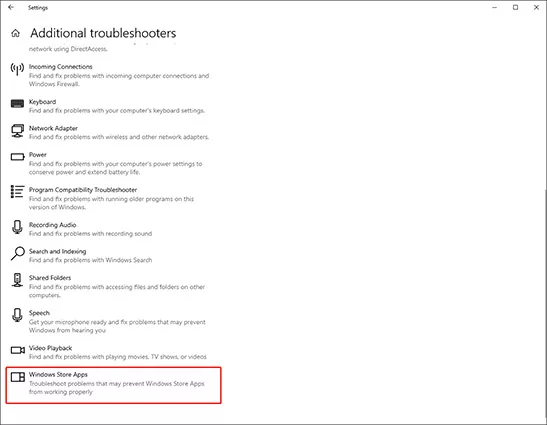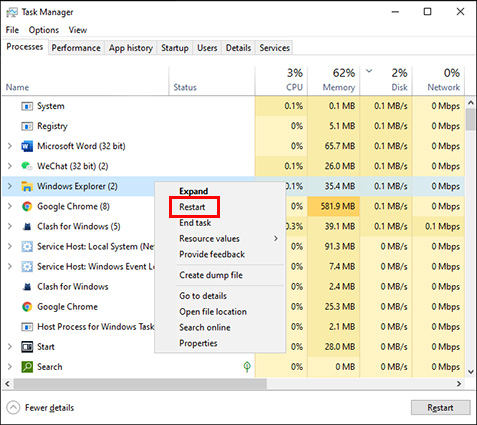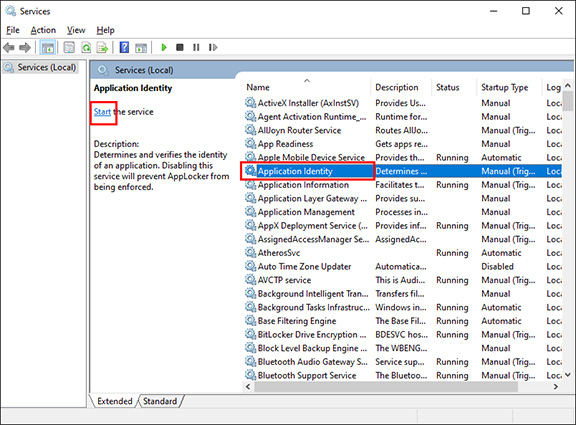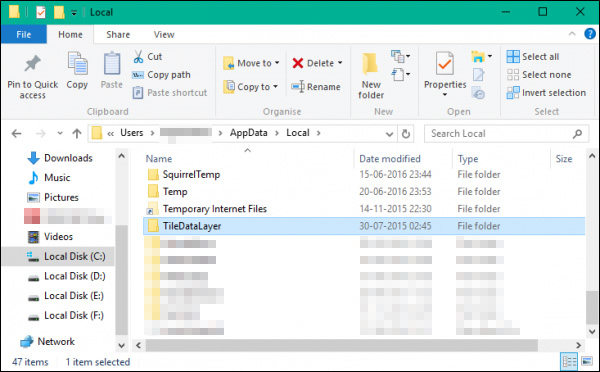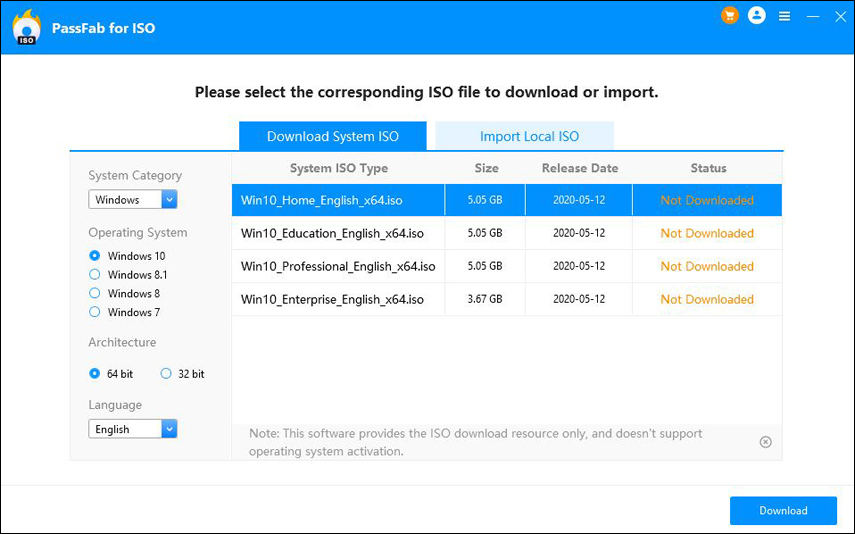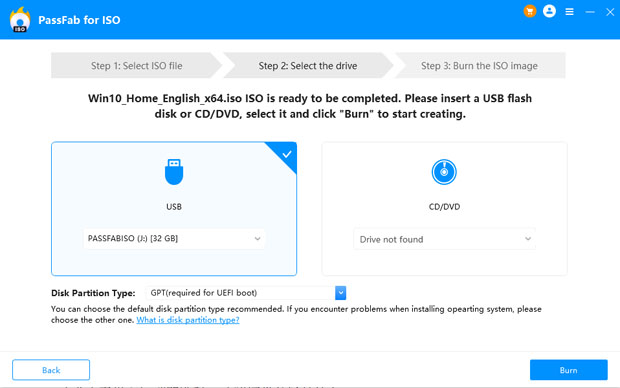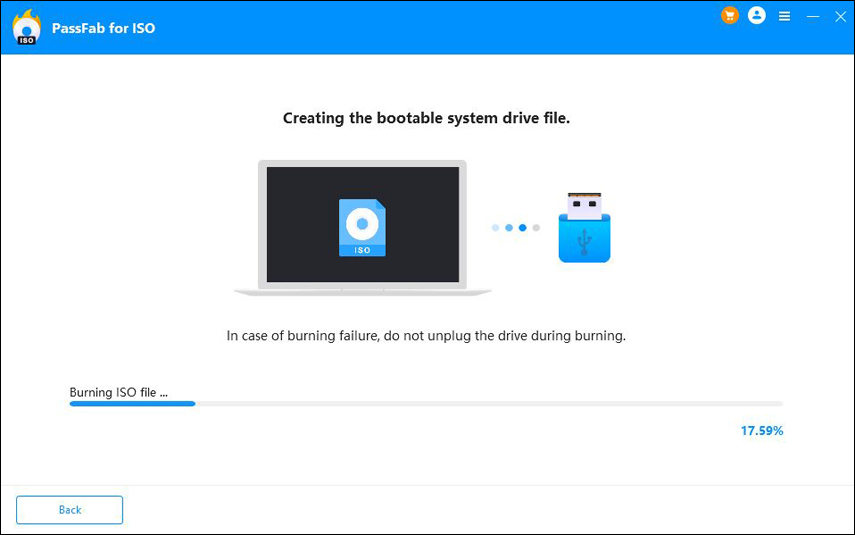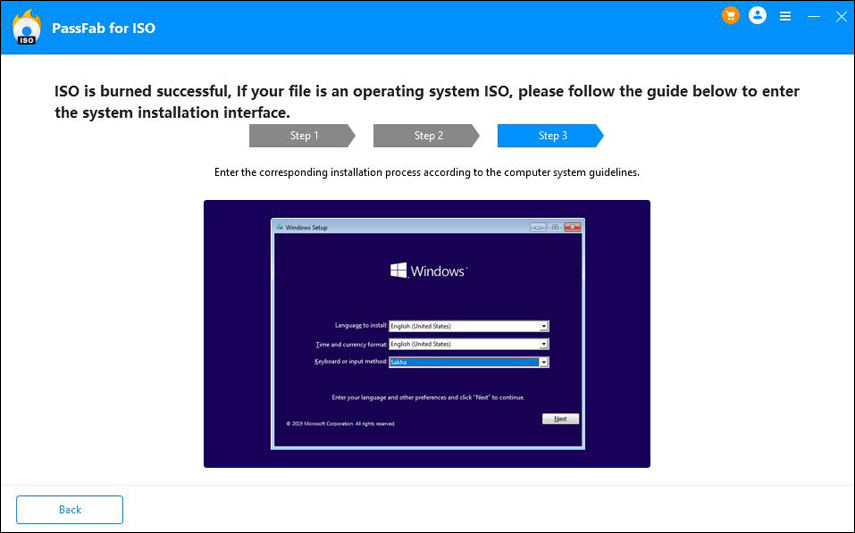Many users face the trouble with Windows taskbar not working. Issues like these cause serious problems at crucial times and give an awful user experience.
Keeping that in mind, we have come with the top 10 solutions for you to troubleshoot and simply fix the issue yourself. So, without any further ado, let us dive right in.
10 Ways to Fix Taskbar Not Working Windows 10
- 1. Run Troubleshooter in Settings
- 2. Run DISM Scan via Command Prompt or Task Manager
- 3. Restart Windows Explorer in Task Manager
- 4. Start Application Identity in Services
- 5. Reregister Taskbar through PowerShell
- 6. Check for Updates
- 7. Uninstall Incompatible Application
- 8. Stop Certain Application Launching at Startup
- 9. Use Another User Account
- 10. Perform A System Restore
1. Run Troubleshooter in Settings
The great thing about Windows is, it comes with various troubleshooters that are designed specifically to handle issues like these. To run troubleshooter in settings,
- Go to Windows settings.
- Click on Update and Security.
- From the left side panel, click on Troubleshoot.
Now from the right panel of the troubleshoot menu, select Windows Store Apps, and hit Run the Troubleshoot. If you didn’t find it, click Additional troubleshooters.

Ans this is will solve the problem with Windows 10 taskbar not working.
2. Run DISM Scan via Command Prompt or Task Manager
You can also perform a Deployment Image Servicing and Management, shortly known as DISM scan to fix the issue. To do that,
- Click on Ctrl + Shift + Esc to access the Task Manager.
- Now click on File and go to Run a new task.
- Type CMD in the dialog box and click on Ok.
- Once the command prompt pops up, type "DISM /Online /Cleanup-Image /RestoreHealth", to solve the issue with your taskbar not working.
3. Restart Windows Explorer in Task Manager
The next very easy solution is to restart the Windows explorer in the task manager. To do that,
- Press Ctrl + Shift + Esc to access the Task Manager.
- In the process menu, you will find an option called Windows Explorer.
Right-click on that and then click on restart.

This is by far one of the simplest methods to fix taskbar unresponsive Windows 10.
4. Start Application Identity in Services
- Click on Ctrl + Shift + Esc to access the Task Manager.
- Now click on File and go to Run a new task.
- Type “SERVICES.MSC” and press enter.
- Now scroll and find the Application Identity.
Now click on start.

5. Reregister Taskbar through PowerShell
You can also fix the issue with your Windows 10 taskbar not working through PowerShell. To do that,
- Press the Windows key and simply type PowerShell.
- Now right click on the search result and Run as administrator.
Now when the PowerShell window pops up, paste the following command,
Get-AppXPackage -AllUsers | Foreach {Add-AppxPackage -DisableDevelopmentMode -Register “$($_.InstallLocation)\AppXManifest.xml”}- Now go to C:/Users/name/AppData/Local/
Scroll down to find the TileDataLayer file and delete it.

And this will simply solve the issue.
6. Check for Updates
Many Windows version comes with bugs that come with a taskbar unresponsive Windows 10. And Windows roll out small updates to fix these issues.
So, looking for an update is another great way to fix the problem. To do that,
- Go to Settings.
- Select Update on Security.
- Now click on Check for Updates to see if any update is available for you. If there is, download and install to fix the issue.
7. Uninstall Incompatible Application
To uninstall a program or an application,
- Press Windows key and type Control Panel.
- Select the top result to access the control panel.
- Select Program and then click on Programs and Features.
- Now select the program or application that may have compatibility issues with your current version of Windows and click on Uninstall.
- Now check if the issues with your taskbar not working are solved.
8. Stop Certain Application Launching at Startup
Some startup applications might be interfering with the Windows 10 taskbar. If you suspect that they are causing the issues, it is a good idea to remove them from the list of application that lunches at the startup of your Windows. To do that,
- Click on the Windows key and type Settings.
- Now from the settings menu click on Apps to manage the startup settings.
- From the left sidebar, click on Startup.
- Now disable all the applications that may cause the issue.
9. Use Another User Account
Sometimes the problem is caused by the specific user account data. So switching to a new user account can sometimes solve the issue temporarily in the case of an emergency. Even though it is not a permanent solution, but it comes in handy when needed.
Read Also: 7 Methods to Create Local Account Windows 10 [2025]
10. Perform A System Restore
Resorting to a previous system point can solve many issues including the Windows taskbar not working.
To do that,
- Press your Windows key and type System Restore.
- Now from the system properties, go to the system protection option and click on system restore.
- Now choose any restore point and click next twice to proceed.
- Once done, your system should be good as new without any taskbar issues.
Bonus Tip: How to Reinstall Window 10
When it comes to reinstalling Windows 10, downloading or importing ISO Files is the main concern. And this is where the powerful tool PassFab for ISO comes into play.
To do that,
- Install the PassFab for ISO application.
Now choose the Windows ISO file you require and download.

- Now insert a USB drive or CD/DVD.
Select the one you chose and click on Burn.

Wait for the application to finish the burn the ISO file.

- Now after the burn is done, you have created a bootable disc successfully.
Now you can simply reinstall Windows 10 with this bootable disc.

To Conclude
That ends our list for the10 Ways to Fix Taskbar Not Working Windows 10. If nothing works, then you can always opt for the easy reinstallation process of Windows 10 using PassFab for ISO. Stay tuned for more troubleshoot updates and solutions.
